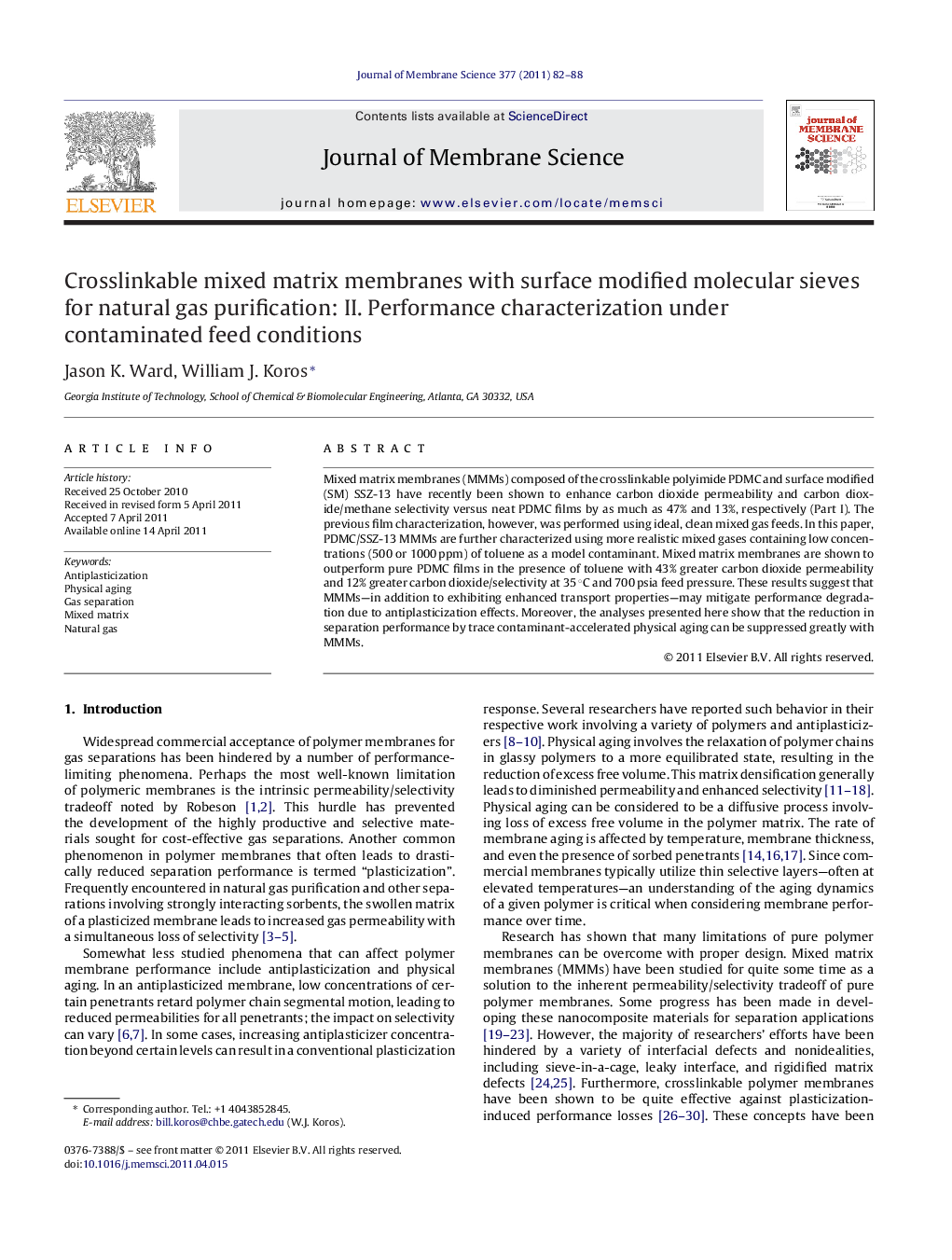| Article ID | Journal | Published Year | Pages | File Type |
|---|---|---|---|---|
| 635495 | Journal of Membrane Science | 2011 | 7 Pages |
Mixed matrix membranes (MMMs) composed of the crosslinkable polyimide PDMC and surface modified (SM) SSZ-13 have recently been shown to enhance carbon dioxide permeability and carbon dioxide/methane selectivity versus neat PDMC films by as much as 47% and 13%, respectively (Part I). The previous film characterization, however, was performed using ideal, clean mixed gas feeds. In this paper, PDMC/SSZ-13 MMMs are further characterized using more realistic mixed gases containing low concentrations (500 or 1000 ppm) of toluene as a model contaminant. Mixed matrix membranes are shown to outperform pure PDMC films in the presence of toluene with 43% greater carbon dioxide permeability and 12% greater carbon dioxide/selectivity at 35 °C and 700 psia feed pressure. These results suggest that MMMs—in addition to exhibiting enhanced transport properties—may mitigate performance degradation due to antiplasticization effects. Moreover, the analyses presented here show that the reduction in separation performance by trace contaminant-accelerated physical aging can be suppressed greatly with MMMs.
► Low level toluene contamination leads to antiplasticization in PDMC membranes. ► Higher levels of toluene appear to prevent more severe physical aging in PDMC. ► SSZ-13 appears to help prevent antiplasticization-induced permeability loss. ► SSZ-13 appears to help prevent aging-induced permeability loss.
